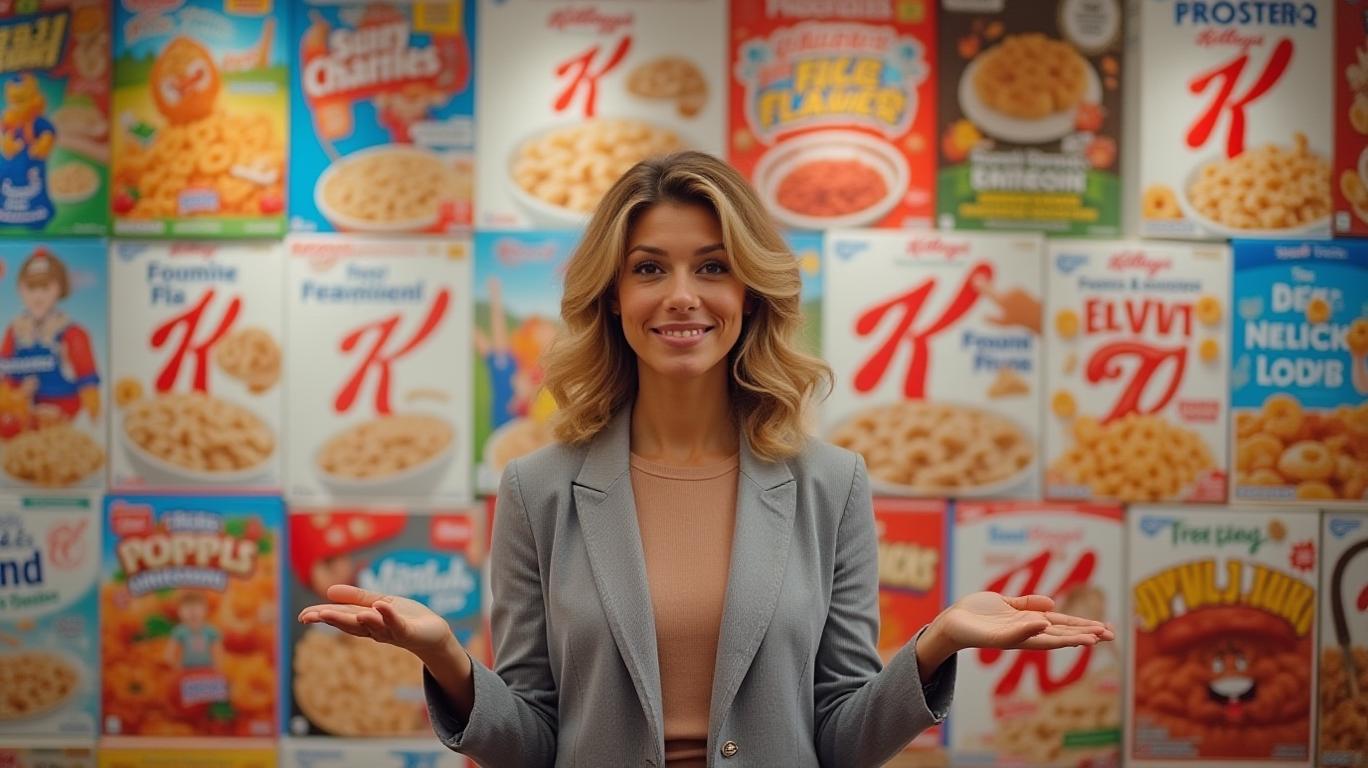Kellogg’s Revised Outlook: Navigating Headwinds in a Shifting Consumer Landscape

Kellogg Company (KL) has long been synonymous with breakfast staples, but its recent revised outlook underscores the perils of relying on a shrinking category. On May 6, 2025, the company slashed its financial guidance, citing weakening consumer demand, price resistance, and shifting health trends. The announcement sent shares plummeting 6% premarket, reflecting investor skepticism about its ability to revive sales in a challenging environment. Below is an analysis of the strategic challenges, opportunities, and risks facing one of America’s oldest food giants.
The Financial Reality: A Quarter of Disappointment
Kellogg’s first-quarter 2025 results were stark. Revenue fell 5.6% to $667 million, missing estimates by $12.5 million, while EPS dropped to $0.20—half of Wall Street’s $0.40 forecast. The U.S. cereal market, its core business, declined by 80 basis points year-to-date, with category share slipping to 25.4%. Canadian sales fared worse, losing 160 basis points of share.
The revised full-year outlook is equally concerning: organic sales are now expected to decline 2-3%, down from a prior 1% decline, while adjusted EBITDA may fall up to 2%, versus a previously projected 4-6% rise.
Why Demand is Faltering: A Perfect Storm
Kellogg’s struggles stem from a confluence of factors:
Price Sensitivity and Inflation: Consumers are resisting price hikes. Despite a 3% pricing strategy to offset rising input costs (including tariff-driven expenses of $2–4 million in 2025), volumes fell 8.6% as shoppers turned to cheaper alternatives like private-label cereals.
Health and Wellness Shifts: The rise of protein-forward and plant-based diets has eroded demand for traditional cereals. Emerging brands, particularly in the $13 billion protein-bar segment, are siphoning sales. Kellogg’s response—repositioning Special K as a high-protein, zero-sugar option—has yet to deliver results, with the brand underperforming in Q1.
Global Headwinds:
- Europe: Inflation (peaking at 8.9% in 2022) has fueled private-label growth and consumer demand for affordability.
- Asia: Local competitors like India’s Bagrry’s Organic Wild Honey are capturing health-conscious buyers.
- Africa/Middle East: Geopolitical instability and soaring food prices are limiting access to key ingredients like wheat and sunflower oil.
Kellogg’s Playbook: Can Innovation and Cost Cuts Save the Day?
Management is betting on three pillars to reverse the slide:
- Product Innovation:
- Relaunching Kashi as a premium, nutritionally focused brand.
- Introducing Special K Protein Granola to tap into the protein trend.
A “SPOONS” framework emphasizing simplified ingredients, protein, and reduced sugar.
Cost Discipline:
- Supply chain modernization aims to deliver 300 basis points of EBITDA margin expansion by 2026 (100 basis points already achieved).
SG&A cuts and self-operated logistics aim to reduce overhead.
Distribution Gains: Expanding partnerships with “winning channels” (e.g., e-commerce and convenience stores) to offset declining supermarket sales.
CEO Gary Pilnik framed these moves as a pivot to “structural, not cyclical” trends. CFO David McKinstry added that operational efficiency will “anchor profitability,” even as near-term sales remain weak.
The Risks Ahead
While Kellogg’s strategy has merit, execution risks loom large:
- Supply Chain Delays: Tariffs and geopolitical disruptions could stall margin improvements.
- Brand Performance: Special K’s underperformance demands aggressive marketing to regain traction.
- Competitor Threats: Smaller, agile brands may outpace Kellogg’s pace of innovation.
Conclusion: A Race Against Time
Kellogg’s revised outlook paints a grim near-term picture, but its long-term strategy—centered on health innovation and cost savings—could stabilize its position. The company’s 500 basis point EBITDA margin target by 2026 remains achievable if supply chain modernization stays on track. However, the path to recovery hinges on three critical factors:
- Consumer Receptivity: Can Kellogg’s new products (e.g., Special K Protein Granola) meaningfully counter declining cereal sales?
- Global Resilience: Will emerging markets like Asia and Africa offset weakness in mature regions?
- Investor Patience: With shares near their 52-week low and free cash flow negative, investors will demand visible progress by 2026.
For now, the verdict is mixed. Kellogg’s structural shift toward health and efficiency is prudent, but the speed of execution—and the willingness of consumers to return to cereal aisles—will determine whether this century-old brand can reinvent itself. As Pilnik put it: “The category is still a tremendous destination,” but the journey to profitability will be anything but smooth.

Comments
No comments yet